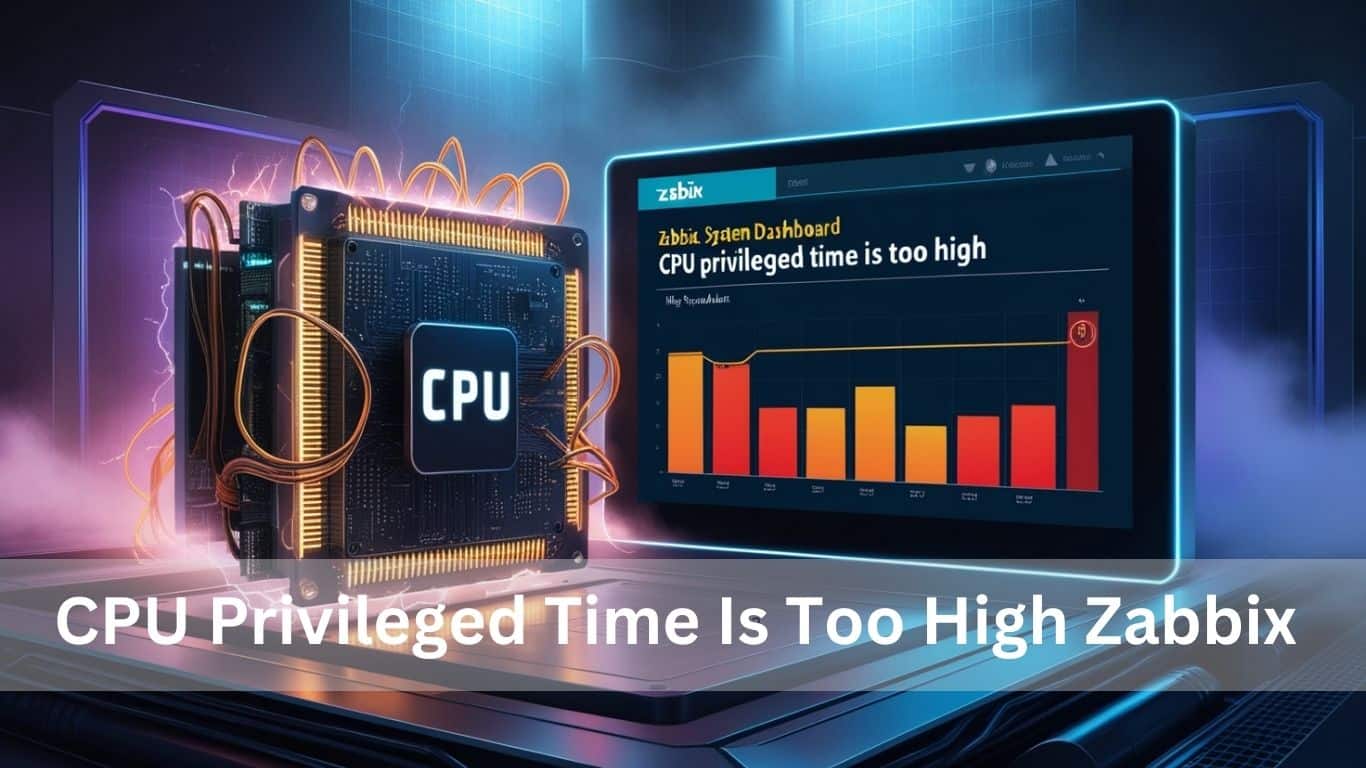I was confused when I saw that CPU Privileged Time is too high in Zabbix. I learned it means system processes overload the CPU, and fixing it improves performance.
CPU Privileged Time Is Too High Zabbix (short answer)
Yes, when Zabbix shows that CPU-privileged time is too high, the CPU is overloaded with system tasks. This can slow performance and needs checking and adjustments to fix.
In this article, we will discuss how CPU-privileged time is too high in Zabbix.
Understanding High CPU Privileged Time in Zabbix
When Zabbix shows high CPU privileged time, it means the CPU is overloaded with system tasks, slowing down monitoring and alerting. This can lead to performance delays and system inefficiencies.
Understanding CPU Privileged Time and its Impact on Zabbix
High CPU privileged time in Zabbix slows the system, causing delayed alerts and inaccurate data. Understanding its impact allows you to optimize CPU usage, ensuring smooth and efficient Zabbix performance.
Causes of High CPU Privileged Time in Zabbix
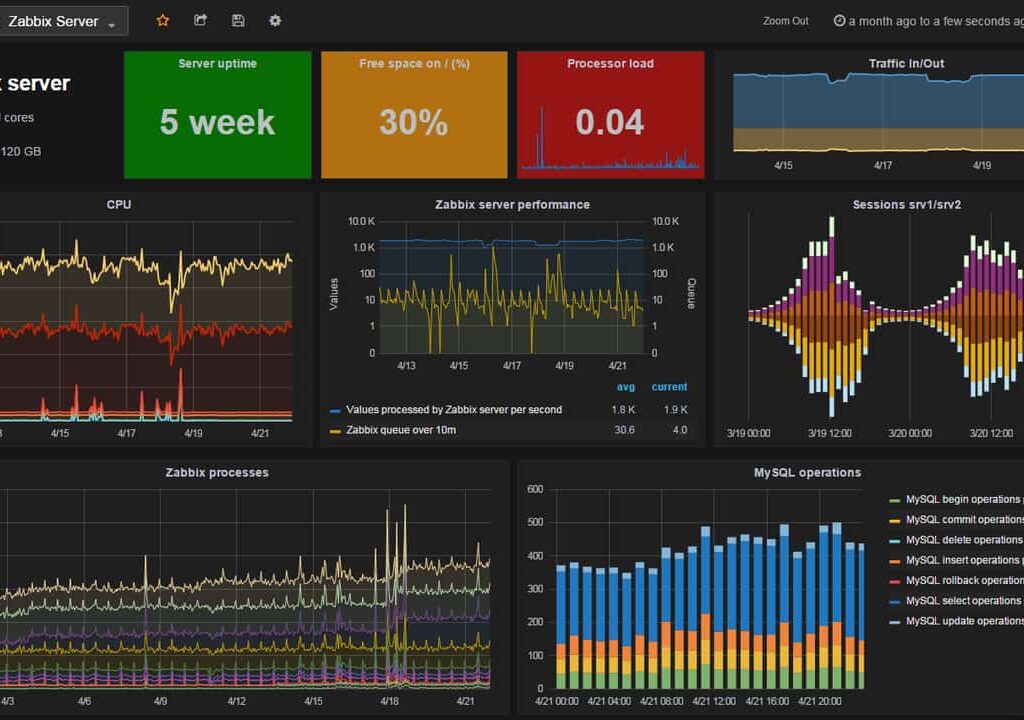
1. Insufficient System Resources
When system resources like CPU, memory, or disk space are low, the CPU spends more time on system tasks, increasing privileged time in Zabbix. Upgrading resources helps improve performance and reduce delays.
2. Inefficient Zabbix Configuration
Poor Zabbix configuration can cause high CPU privileged time by overloading the system with unnecessary checks and misconfigured triggers. Optimizing settings helps the CPU focus on important tasks, improving performance.
3. High Network Traffic and Disk I/O
Too much network traffic and disk activity can raise CPU privileged time in Zabbix, leaving less CPU power for monitoring. Improving network and disc settings helps reduce the load, boosting overall system performance.
4. External factors
Background processes and third-party apps can increase CPU privileged time, reducing Zabbix’s efficiency. By identifying and managing these external factors, you can lower CPU load and improve Zabbix’s overall performance.
Mitigating High CPU Privileged Time in Zabbix
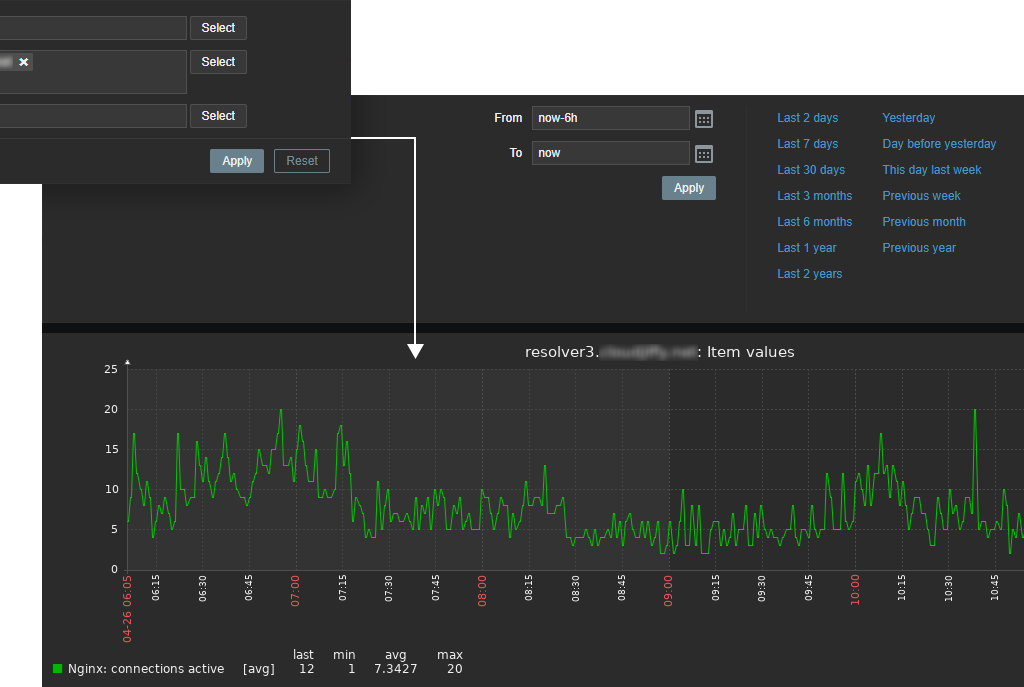
1. Upgrade Hardware and Optimise Resources
Upgrading CPU, RAM, and storage reduces high CPU-privileged time, allowing the system to handle tasks more efficiently. Adjusting settings and removing unnecessary processes ensures Zabbix runs smoothly, improving overall performance and reducing delays.
2. Fine-tune Zabbix Configuration
Fine-tuning Zabbix configuration means optimizing checks and triggers to lower CPU load. Remove unneeded items, adjust polling intervals, and streamline processes. This helps reduce CPU privileged time, improving overall monitoring performance.
3. Optimise Network and Disk Performance
Optimizing network and disc performance lowers CPU privileged time by reducing the CPU’s workload. Speeding up data transfer, improving disc operations, and upgrading hardware ensures Zabbix runs smoothly, boosting overall system performance and responsiveness.
4. Maintain system security and updates
Maintaining system security and regular updates helps reduce high CPU-privileged time. Updates apply optimizations and security patches, lowering CPU load. This helps Zabbix run smoothly by preventing problems that might increase CPU usage.
Investigating Further Aspects of CPU Privileged Time in Zabbix
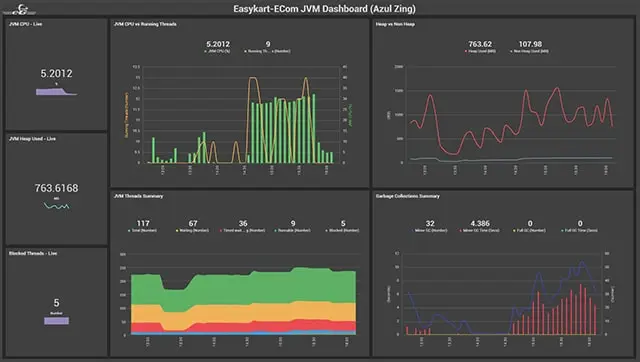
1. Analysing the Impact of CPU Privileged Time on Zabbix Performance
High CPU privileged time slows down Zabbix by overloading the CPU with system tasks, leading to delayed alerts and slow data processing. Analyzing this helps optimize performance, ensuring timely alerts and reliable monitoring.
2. Implementing Monitoring and Alerting for CPU Privileged Time
Setting up monitoring and alerts for CPU-privileged time in Zabbix tracks performance and identifies CPU usage issues. This proactive approach helps you quickly address problems, keeping Zabbix efficient and avoiding performance bottlenecks.
What Does High CPU Privileged Time Indicate?
High CPU privileged time means the CPU is spending too much time on system tasks, slowing down performance. This often signals resource bottlenecks or inefficient configurations. Fixing it ensures Zabbix runs smoothly and efficiently handles monitoring tasks.
Also Read: CPU Machine Check Architecture Error Dump – Fixed 100% in 2024
1. How to Monitor CPU Privileged Time in Zabbix?
To monitor CPU privileged time in Zabbix, set up custom items and triggers to track CPU metrics. Use graphs and alerts to visualize trends and get notifications when privileged time is high, enabling real-time monitoring and quick issue resolution.
2. Optimising and Mitigating High CPU Privileged Time
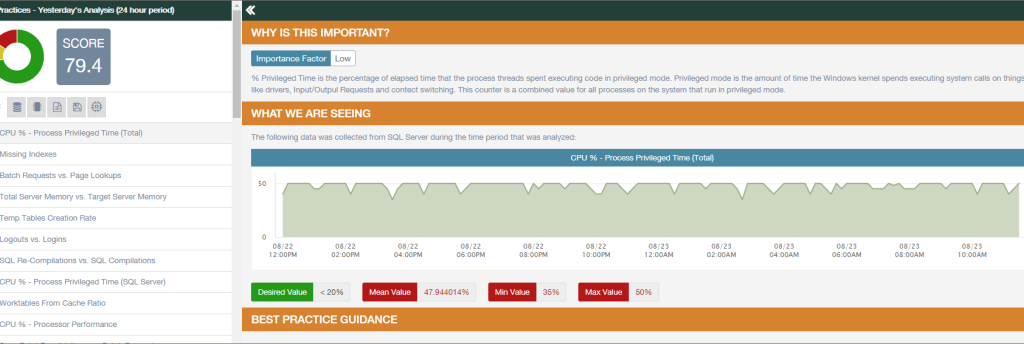
To reduce high CPU privileged time, optimize system resources, fine-tune configurations, and improve network performance. Regular updates and security measures prevent inefficiencies, helping the CPU manage tasks better and enhancing Zabbix’s performance for effective monitoring and alerting.
CPU Privileged Time Is Too High Zabbix Windows 11
On Windows 11, high CPU privileged time in Zabbix means the CPU is overloaded with system tasks, slowing down performance. Optimizing resources and configurations helps balance CPU duties, ensuring the smooth operation of Zabbix.
CPU Privileged Time Is Too High Zabbix Windows 10
In Windows 10, high CPU privileged time in Zabbix indicates excessive CPU usage on system tasks, leading to performance issues. Optimizing system resources and Zabbix settings can resolve this, enhancing efficiency and stability.
Also Read: CPU How Hot Is Too Hot – A Detailed Overview!
CPU Queue Length Is Too High
A high CPU queue length means too many tasks are waiting for CPU time, leading to system slowdowns. To improve responsiveness and performance, optimize processes, and balance workloads to reduce the queue.
Zabbix Windows Snmp Monitoring
Zabbix’s SNMP monitoring on Windows collects data from network devices. This data helps analyze network performance and find problems. Properly setting up SNMP allows for better monitoring, which improves network management and troubleshooting efforts.
Zabbix Context Switches Per Second
Context switches per second show how often the CPU changes from one task to another. A high number of switches can signal inefficiencies in system performance.
Importance of Monitoring
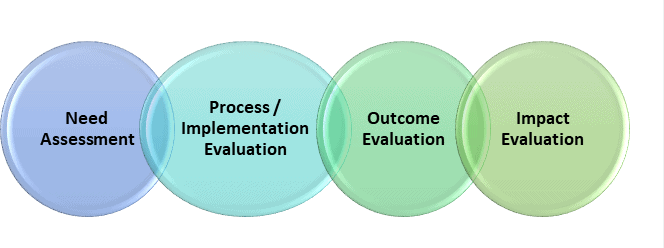
- Identifying Bottlenecks:
Monitoring this metric in Zabbix helps pinpoint where performance issues may arise.
- Optimizing Performance:
By understanding context switch rates, you can make adjustments to improve CPU task management, leading to smoother system operation.
Os Windows CPU Privileged Time Too High (Over 30% For 5m)
If the CPU’s privileged time on Windows stays over 30% for 5 minutes, the system may be struggling with tasks. This can slow down performance, so finding and fixing the cause can help balance CPU use and boost efficiency.
High CPU Usage On My Windows Clients When Using Zabbix Agent 2
High CPU usage on Windows clients using Zabbix Agent 2 may mean the agent is handling heavy tasks. To reduce this load, improve the agent’s settings and upgrade system resources, ensuring smoother performance and better monitoring overall.
Zabbix Heavy CPU Usage Windows Log
High CPU usage in Windows logs while using Zabbix may mean some processes are inefficient. Check the logs to find which tasks use too much power, then adjust settings to improve performance and prevent system overload.
Mysql Process: Too Much CPU Resource
When MySQL uses too much CPU, it can slow down the system. To reduce this, optimise MySQL settings and improve queries. Regularly checking resource usage helps keep everything balanced, ensuring MySQL runs smoothly without impacting other tasks.
Windows CPU By Zabbix Agent
The Zabbix Agent checks CPU usage on Windows, helping you understand how well the system performs. It tracks CPU activity and spots any problems. Setting it up correctly ensures accurate data, allowing you to improve and keep the system efficient.
Zabbix Agent: High CPU Usage
High CPU usage by the Zabbix Agent means it’s handling demanding tasks. To lower the CPU load, improve the agent’s settings and check the monitoring setup. This ensures effective data collection without stressing the system too much.
CPU. Load To High On Windows

When CPU load is high on Windows, it means the CPU is working too hard, slowing down the system. Finding and optimizing processes that use a lot of resources can help balance the load and enhance overall performance.
Optimal Configuration Of “Processor Load Is Too High” Trigger In Zabbix
To optimize the Processor Load Is Too High trigger in Zabbix, set limits based on your system’s capabilities. Adjusting these settings helps you find problems early, allowing you to act quickly and keep your system running smoothly.
Disabling “Processor Load Is Too High” Trigger On Certain Hosts
To disable the Processor Load Is Too High trigger for specific hosts in Zabbix, change their settings. This customization lets you adjust monitoring for each host’s needs, reducing unnecessary alerts for those with different performance requirements.
How To View CPU Load On Windows Server 2008 [Duplicate]?
To check CPU load on Windows Server 2008, open Task Manager or Performance Monitor. These tools show real-time CPU usage and help find performance problems. Regular monitoring keeps the server running smoothly and efficiently.
Also Read: Do You Have To Reinstall Windows With A New CPU – Ultimate Guide – 2024
Windows Monitoring and Integration With Zabbix
Integrating Zabbix with Windows monitoring tools gives a complete view of system performance. Zabbix gathers and analyses data from Windows, helping you spot problems and improve efficiency. This setup enhances monitoring, making resource management smoother and more effective.
Delta Bravo Performance Counters: CPU % Vs Process Privileged Time (Total)
Delta Bravo performance counters show the percentage of CPU usage alongside process privileged time. This comparison helps you see if system tasks are using too much CPU. Understanding this can improve performance and help manage system workloads better.
Zabbix and CPU Perf Counter in Windows Server Need CPU Privileged & Interrupts Time
Zabbix can monitor CPU performance counters on Windows Server, specifically tracking CPU privileged time and interrupt time. This monitoring helps identify how much CPU is used for system tasks versus user tasks, ensuring better performance management and system efficiency.
FAQ,s
1. What does “CPU privileged time” mean in Zabbix?
CPU privileged time in Zabbix measures how long the CPU works on important system tasks. High levels can mean the CPU is overworked, which might slow down overall performance.
2. How can I troubleshoot high CPU privileged time in Zabbix?
To troubleshoot high CPU privileged time in Zabbix, check for resource-heavy processes or drivers. Optimise settings, update drivers and reduce system tasks to help balance CPU usage.
3. What is CPU privileged time?
CPU privileged time shows how much time the CPU spends on system tasks like drivers and the operating system. If it’s high, it may mean there’s a problem with system processes or hardware.
4. What CPU time is too high?
CPU time is too high when it stays above 80-90% for a long time. This can slow down the system and show that some tasks are using too many resources.
5. How do I fix high CPU usage on my server?
To fix high CPU usage, stop unnecessary programs, update software, and optimise server settings. Monitor performance regularly and adjust configurations to balance the load and improve efficiency.
6. How much CPU time is normal?
Normal CPU time depends on system usage, but it’s usually below 20-30% for regular tasks. Higher usage is fine during heavy workloads, but consistently high CPU may need attention.
7. What is maximum CPU time?
Maximum CPU time depends on the system. If it stays close to 100% for a long time, it can slow down performance. Ideally, CPU usage should not stay high for too long.
8. How do I fix high CPU time?
To fix high CPU time, find the processes using too much CPU in Task Manager. Then, adjust or close those processes, update programs, and optimize system settings to reduce CPU load.
9. Why is it important to monitor high CPU-privileged Privileged Time in Zabbix?
Monitoring high CPU Privileged Time in Zabbix is important because it shows how much the CPU is busy with system tasks. If it’s too high, performance may suffer, so adjustments are needed.
10. Can software settings affect CPU-privileged time in Zabbix?
Yes, software settings can affect CPU-privileged time in Zabbix. Poorly optimized settings may increase system tasks, leading to higher CPU usage. Adjusting configurations can help reduce privileged time and improve performance.
11. What Can Cause High CPU Privileged Time In Zabbix?
High CPU privileged time in Zabbix can be caused by heavy system tasks, inefficient software, hardware issues, too many interruptions, or incorrect configurations, leading to increased resource usage.
12. How can I optimize CPU-privileged time in Zabbix?
To optimize CPU-privileged time in Zabbix, reduce heavy tasks, update software, adjust settings, and monitor performance regularly for better efficiency.
Conclusion
Monitoring CPU Privileged Time in Zabbix is critical for maintaining smooth server performance. By configuring Zabbix to track this metric and setting up alerts, you can prevent bottlenecks and ensure that your system operates at its best. Taking the time to optimize your system and stay aware of potential issues will go a long way in maintaining healthy infrastructure.
Also Read:
- CPU Machine Check Architecture Error Dump – Fixed 100% in 2024
- CPU How Hot Is Too Hot – A Detailed Overview!
- Do You Have To Reinstall Windows With A New CPU – Ultimate Guide – 2024
